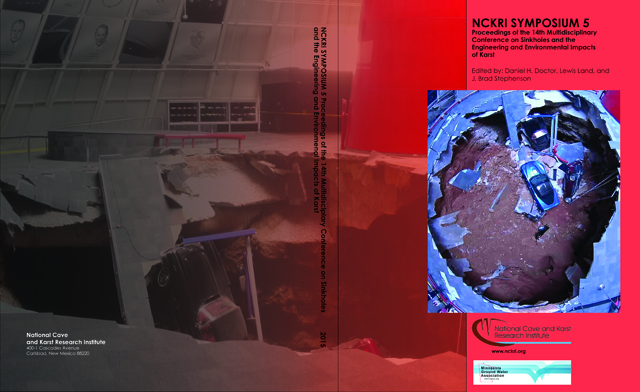Abstract
As part of a USDOT-funded study focused on the implementation of satellite-based Interferometric Synthetic Aperture Radar (InSAR) technology, the researchers integrated InSAR-derived point cloud data into the transportation design process within karst terrain. The group’s workflow included initial validation of InSAR data by acquiring over 1.67 million InSAR data points (various “scatterers”) which were then brought into a GIS dataframe and georeferenced to locations of mapped sinkholes. The technique was then applied to the evaluation of karst hazard of within a 40x40 km data frame located in the Valley and Ridge Province of Virginia. The group identified systematic kinematic differences in scatterer behavior with respect to their proximity to mapped karst geohazards, and used this method to screen for and identify unknown karst features, revealing numerous previously unidentified sinkholes. After validating the data with quantitative field correlations, the group then integrated the InSAR data into a traditional, CADD-developed design ported into a GIS dataframe. This integrated data was then applied to a traditionally-developed roadway project and used to optimize the location of stormwater management assets. In so doing, the group was able to develop open-source data delivery method that allows greater flexibility, efficiency, and optimization of the infrastructure design and planning process, which can be developed collaboratively over geospatial platforms. This data integration offers lifecycle cost benefits, improvements to the safety of the traveling public, and protection of the environment, particularly in groundwater-sensitive karst terranes. Disclaimer: The views, opinions, findings and conclusions reflected in this presentation are the responsibility of the authors only and do not represent the official policy or position of the US Department of Transportation/Office of the Assistant Secretary for Research and Technology, or any state or other entity.
Rights Information

This work is licensed under a Creative Commons Attribution 3.0 License.
DOI
http://dx.doi.org/10.5038/9780991000951.1020
Included in
Integration and Delivery of Interferometric Synthetic Aperture Radar [InSAR] Data Into Stormwater Planning Within Karst Terranes
As part of a USDOT-funded study focused on the implementation of satellite-based Interferometric Synthetic Aperture Radar (InSAR) technology, the researchers integrated InSAR-derived point cloud data into the transportation design process within karst terrain. The group’s workflow included initial validation of InSAR data by acquiring over 1.67 million InSAR data points (various “scatterers”) which were then brought into a GIS dataframe and georeferenced to locations of mapped sinkholes. The technique was then applied to the evaluation of karst hazard of within a 40x40 km data frame located in the Valley and Ridge Province of Virginia. The group identified systematic kinematic differences in scatterer behavior with respect to their proximity to mapped karst geohazards, and used this method to screen for and identify unknown karst features, revealing numerous previously unidentified sinkholes. After validating the data with quantitative field correlations, the group then integrated the InSAR data into a traditional, CADD-developed design ported into a GIS dataframe. This integrated data was then applied to a traditionally-developed roadway project and used to optimize the location of stormwater management assets. In so doing, the group was able to develop open-source data delivery method that allows greater flexibility, efficiency, and optimization of the infrastructure design and planning process, which can be developed collaboratively over geospatial platforms. This data integration offers lifecycle cost benefits, improvements to the safety of the traveling public, and protection of the environment, particularly in groundwater-sensitive karst terranes. Disclaimer: The views, opinions, findings and conclusions reflected in this presentation are the responsibility of the authors only and do not represent the official policy or position of the US Department of Transportation/Office of the Assistant Secretary for Research and Technology, or any state or other entity.

